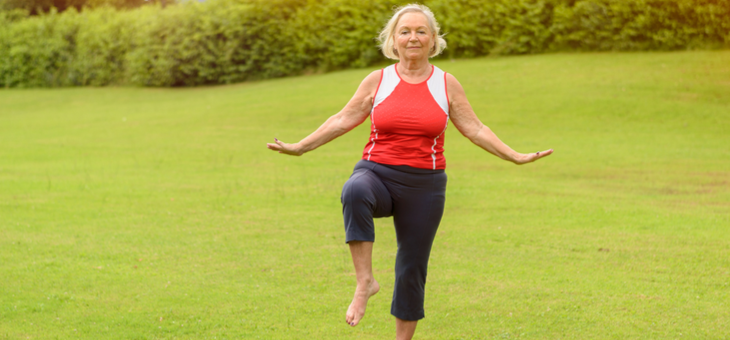Janet is curious about a rock-hopper she sees regularly on her morning walk at the beach and asks physiotherapist Jason Lee whether she can follow his example.
—
Q. Janet
While walking on the beach I often see a man in his early 60s rock-hopping. He says it’s great for his balance – swears by it. I can see how confident he is and I’m terrible when I try. I’m in my mid-60s. Is there something similar I could do?
A. Specific exercises designed to challenge your balance will not only improve your balance but also reduce the likelihood of falling. Regardless of age or previous history, balance can gradually be improved with regular practice.
Balance exercises are designed to challenge your balance systems. Exercises are designed to take you slightly outside your comfort zone to ensure you practise your balance and righting reflexes to prevent you from falling.
For some individuals, this could be as advanced as rock-hopping. Even walking on the beach on soft sand can be challenging and can improve your balance.
Balance exercises challenge your body’s internal systems by applying subtle perturbations to make your body practise righting responses. Perturbations can be created by intrinsic factors such as visual feedback. This could be as simple as closing your eyes while standing upright to remove visual feedback. For many people, removing visual feedback can create balance challenges.
External factors such as uneven surfaces and/or a smaller base of support (feet together/heel to toe or standing on one leg) can also create perturbations and allow you to practise balance reflexes. Uneven surfaces to try at home include using a wobble board. Balancing while standing on an old pillow can be equally challenging. Intrinsic and external factors can even be combined in exercises such as trying to stand on one leg with your eyes closed.
Importantly, the difficulty of these exercises will differ between individuals. As long as your systems are being challenged on a regular basis, your balance will gradually improve. Reflex responses to having your balance challenged will gradually adapt and improve.
A great exercise you could try at home is to practise tandem walking. Imagine you are walking across a tightrope heel to toe.
An additional challenge can be to repeat a similar exercise but walk backwards. The childhood classic of hopscotch can also be a fantastic exercise to challenge balance.
However, regardless of whether you are rock-hopping or performing balance exercises at home, it is crucial to ensure that exercises are performed in a safe and secure environment. As these challenging exercises can increase the sensation and likelihood of falling, ensure you have something secure to support yourself, if required.
I regularly encourage patients to perform balance exercises at home behind a sturdy sofa or kitchen bench. Alternately, a hallway or corner of a room can be a secure area to practise more challenging balance exercises.
Regardless of what level of balance exercises you perform, regularity is important. Ensure that balance exercises are incorporated alongside your regular strength and fitness program.
If you’re unsure of what exercises are most appropriate for you, your health professional, such as a physiotherapist, can thoroughly assess your balance and recommend specific individual exercises.
Has your balance become poorer as you aged? Have you tried any of the exercises described by Jason?
Related articles:
Osteoarthritis exercises made easy
How to sit out back pain
Limit the risk of DVT
Health disclaimer: This article contains general information about health issues and is not advice. For health advice, consult your medical practitioner.

